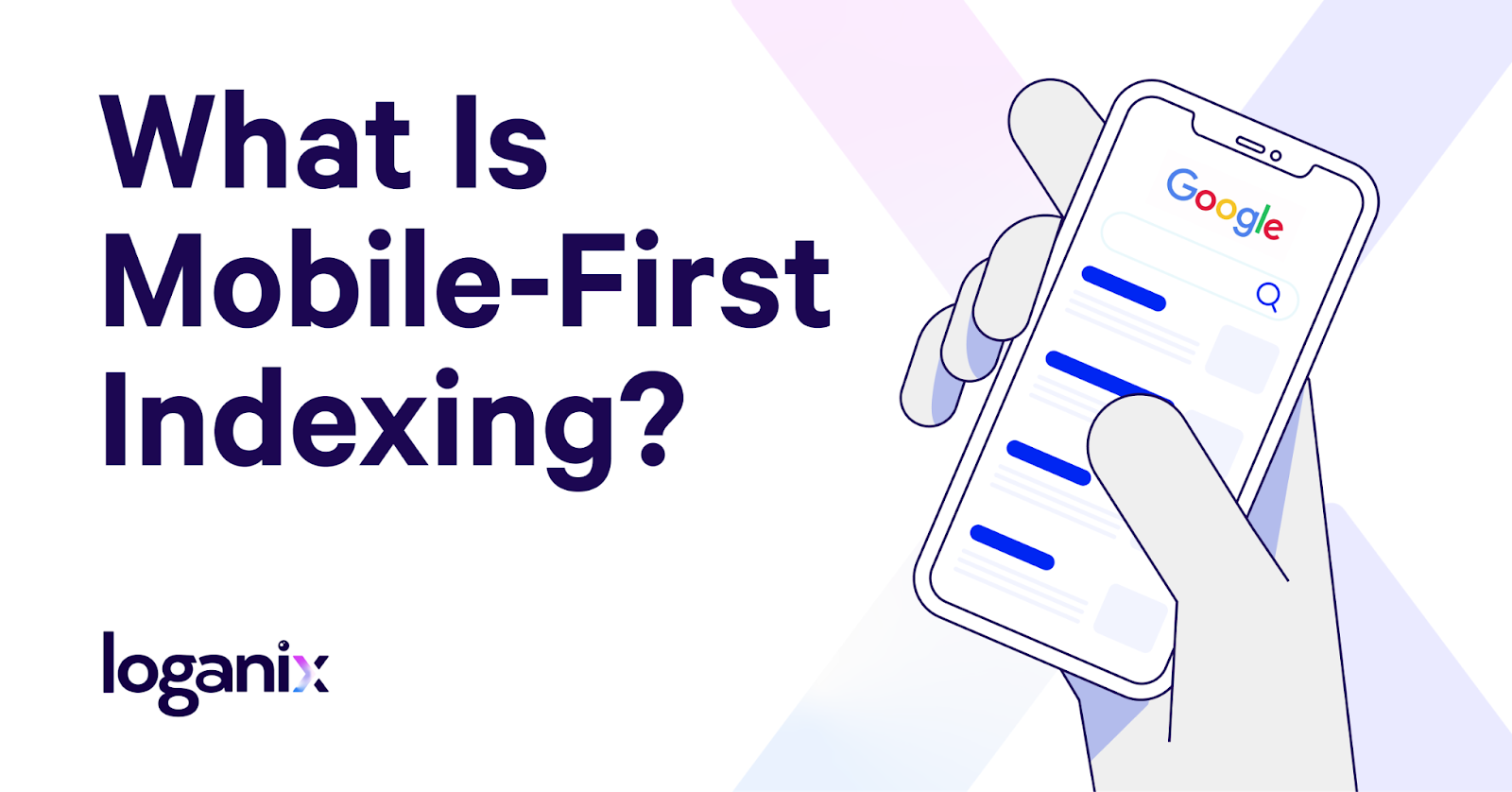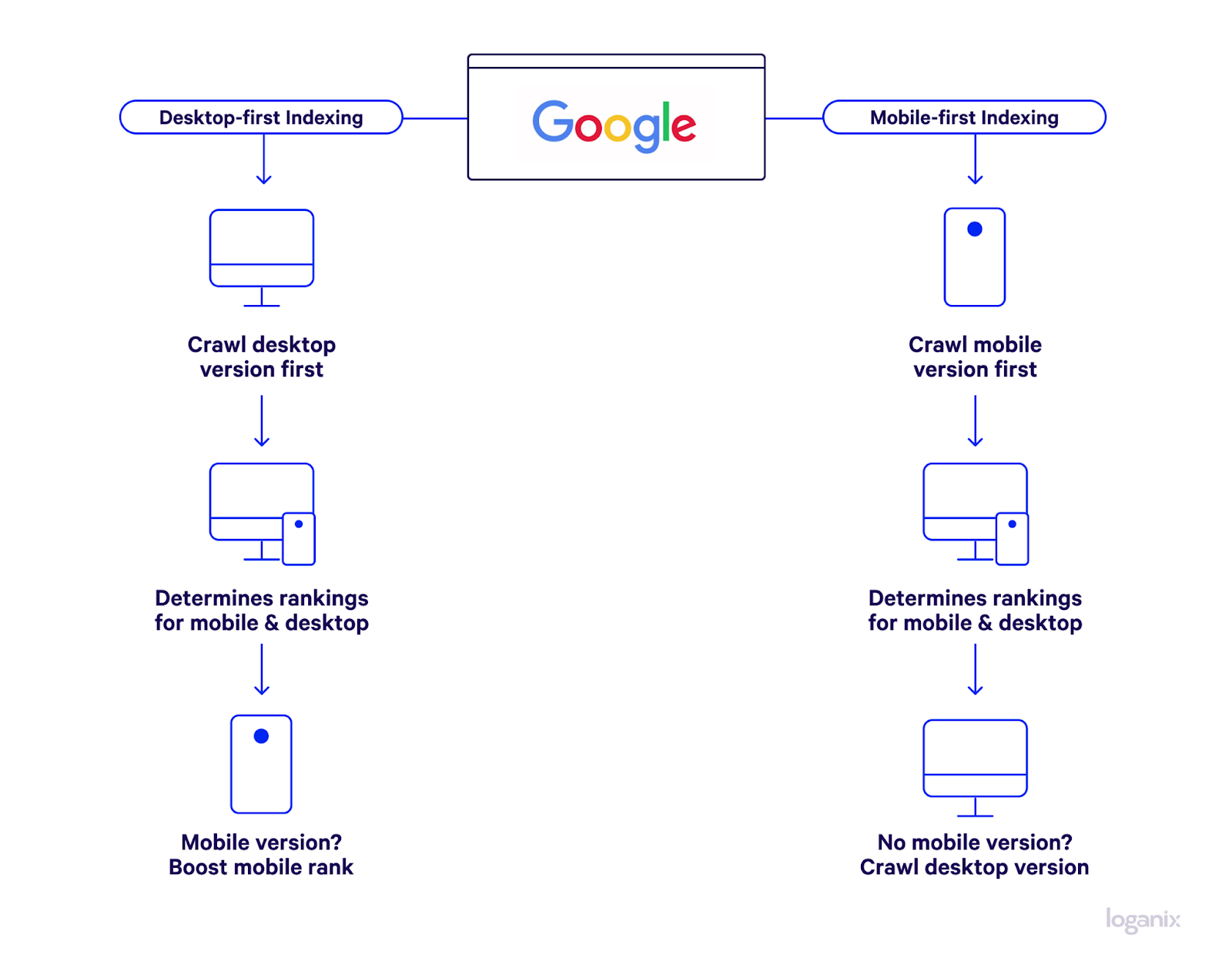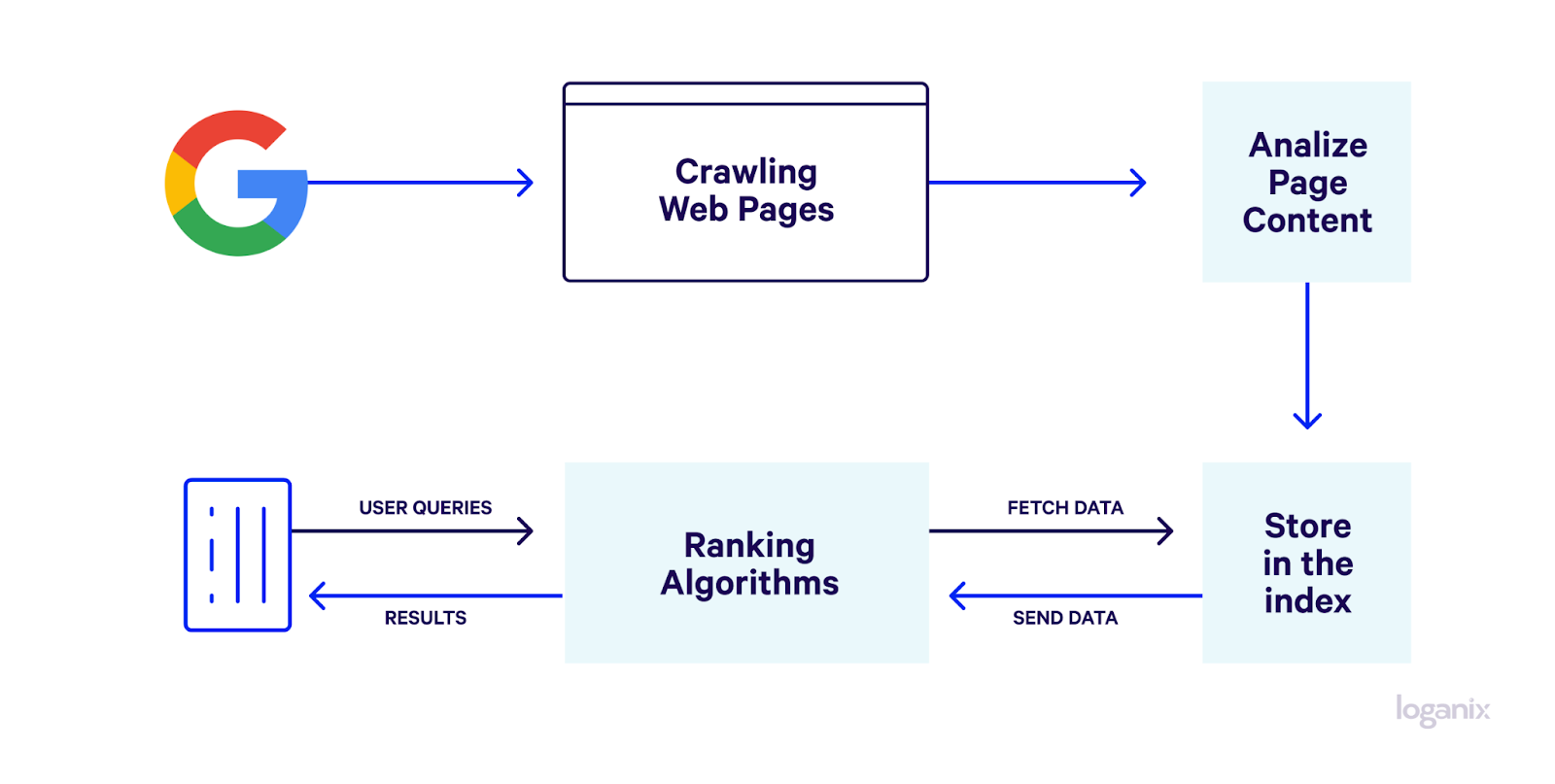What Is Mobile-First Indexing? A Guide to Google’s New Norm

Hand off the toughest tasks in SEO, PPC, and content without compromising quality
Explore ServicesIn an era where smartphones are virtually an extension of ourselves, it’s hardly shocking to learn that 64 percent of searches are now carried out on mobile devices. Keeping up with the trend, Google has recently pivoted to prioritize mobile-first indexing.
So, what does this change mean for SEO professionals, webmasters, and businesses? Put simply, if you’re still optimizing your website with a desktop-centric mindset, there are no ifs, buts, or maybes about it—you’re risking the health of your website and are very likely implementing outdated strategies.
To bring you up to speed with Google’s mobile-first indexing, in this comprehensive guide, we’ll
- answer the question, “What is mobile-first indexing?”
- break down its importance to search engine optimization and user experience,
- and explore some frequently asked questions on mobile indexing.
What Is Mobile-First Indexing?
The concept of mobile-first indexing centers around Googlebot’s practice of prioritizing the mobile version of a website for crawling and indexing over its desktop counterpart, desktop-first indexing—hence the name mobile-first indexing. A mobile page’s data informs the site’s ranking and helps Google understand its structured data, influencing the snippets shown in search results.

Learn more: Interested in broadening your SEO knowledge even further? Check out our SEO glossary, where we’ve explained over 250+ terms.
The Evolution of Mobile-First Indexing
The emergence of mobile-first indexing wasn’t an overnight phenomenon. Rather, it evolved over time in response to changing user behaviors and advancements in mobile technology.
Here’s a quick rundown of Google’s prioritization of the mobile user and, consequently, mobile content:
- Initial announcement (2016): Google first signaled its shift towards mobile-first indexing in 2016, emphasizing the growing importance of mobile-friendly websites.
- Partial rollout (2018): In 2018, Google started the partial rollout of mobile-first indexing, targeting websites already optimized for mobile usability.
- Default for new websites (2019): By 2019, mobile-first indexing became the default for all new websites. Google considered new sites “mobile-first” by default, eliminating the need for manual opt-in.
- Complete rollout (2020): Google finalized the transition to mobile-first indexing for all websites in September 2020, making it the standard practice for evaluating a site’s search result rankings.
Why Is Mobile-First Indexing Important?
Understanding the “what” and “how” of mobile-first indexing is crucial, but equally important is grasping the “why.” Let’s explore the multifaceted impact of mobile-first indexing, from SEO to rankings to user experience.
SEO Importance
Gone are the days when a slick desktop site and optimized content could carry you to the top of the search results. Now, if your mobile site isn’t up to snuff, you’re handicapping your search performance right out of the gate.
Let’s turn to Google itself for guidance here: “While it’s not required to have a mobile version of your pages to have your content included in Google’s Search results, it is very strongly recommended. These best practices apply to mobile sites in general and by definition to mobile-first indexing.”
They go on to say, “Mobile-first indexing is enabled by default for all new websites (new to the web or previously unknown to Google Search). For older or existing websites, we continue to monitor and evaluate pages based on the best practices detailed in this guide. We inform site owners in Search Console of the date when their site was switched to mobile-first indexing.”
How It Affects Page Ranking
Googlebot is now primarily crawling the mobile version of your site. That means everything from your site’s loading times on mobile, its structured data, and even the meta descriptions and titles you choose will directly influence your page rankings (we’ll dig into this more in the next section). So, if you’re still focusing solely on your desktop site, you’re missing out on a massive chunk of the ranking pie.
User Experience
Let’s pivot to something often overlooked but incredibly vital: user experience (UX). Imagine you’re an online shopper looking for a new pair of shoes. You click on a promising link, but the page takes forever to load on your phone, or worse, the layout is all over the place. Chances are, you’re hitting the back button faster than you can say “bad UX.” Poor mobile usability doesn’t just frustrate your visitors—it sends negative signals to Google, which can further drag down your rankings.
How Does Mobile-First Indexing Work?
We’ve established that mobile-first indexing is a big deal. But how does it actually work? Let’s break it down.

The Anatomy of Mobile Crawling
When Googlebot—also known as Google Spider or simply Google Crawler—crawls your site’s mobile version, it looks at several key factors. These include but are not limited to:
- Meta titles and descriptions: Are they optimized for mobile search?
- Structured data: Is it consistent across both mobile and desktop versions?
- Content: Is the essential content visible and accessible on mobile?
The User Experience Angle
Through its Core Web Vital metrics, Google also focuses on user experience signals like mobile page speed, mobile-friendliness, and safe browsing. So, when Googlebot crawls your mobile site, it’s not just looking at on-page and off-page elements, like page content and internal or external links—it’s also evaluating the overall user experience.
The Indexing Process
After crawling, the next step is indexing. Google stores the information it gathers during the crawl and uses it to determine your site’s ranking. With mobile-first indexing, the data from your mobile site gets stored in Google’s index. If your mobile site is a stripped-down version of your desktop site, you might be in for a rude awakening. Google will index what it sees on mobile, not what’s on your more comprehensive desktop site.
Rankings and Search Results
Once Google has crawled and indexed your mobile site, it uses this data to determine your search rankings. And remember, this isn’t just for mobile search results—it’s for desktop searches, too. So, if you’ve been neglecting your mobile site, you’re not just risking your mobile rankings—you’re putting your overall search visibility on the line.
FAQs for SEOs and Webmasters
How Do I Know if a Website Is Mobile-First?
Determining your website’s alignment with mobile-first indexing is straightforward, especially with tools like Google Search Console (GSC) at your disposal. GSC offers a “Mobile Usability” report that identifies any issues affecting your site’s mobile-friendliness. For a more granular look at your site’s mobile performance, you can also turn to specialized online utilities like Google’s Mobile-Friendly Test or PageSpeed Insights. Both tools offer in-depth metrics on loading speed, layout, and overall usability.
Should All Websites Be Mobile-First?
The short answer is yes, especially if you want to improve your search rankings and offer a better user experience. Even if your audience is primarily desktop users, aside from a handful of websites that pre-date the mobile-first index era, remember that Google is using mobile-first indexing for all sites, so it’s only a matter of time before you’ll need to make the switch.
Conclusion and Next Steps
Don’t leave your website’s performance to chance. With Loganix, you’re choosing a partner committed to your success. Our data-driven strategies are optimized for conversions, ensuring you get the most out of your SEO investment.
Ready to get started? Contact us today to discuss how we can help you succeed in the age of mobile-first indexing.
Hand off the toughest tasks in SEO, PPC, and content without compromising quality
Explore ServicesWritten by Adam Steele on October 13, 2023
COO and Product Director at Loganix. Recovering SEO, now focused on the understanding how Loganix can make the work-lives of SEO and agency folks more enjoyable, and profitable. Writing from beautiful Vancouver, British Columbia.





